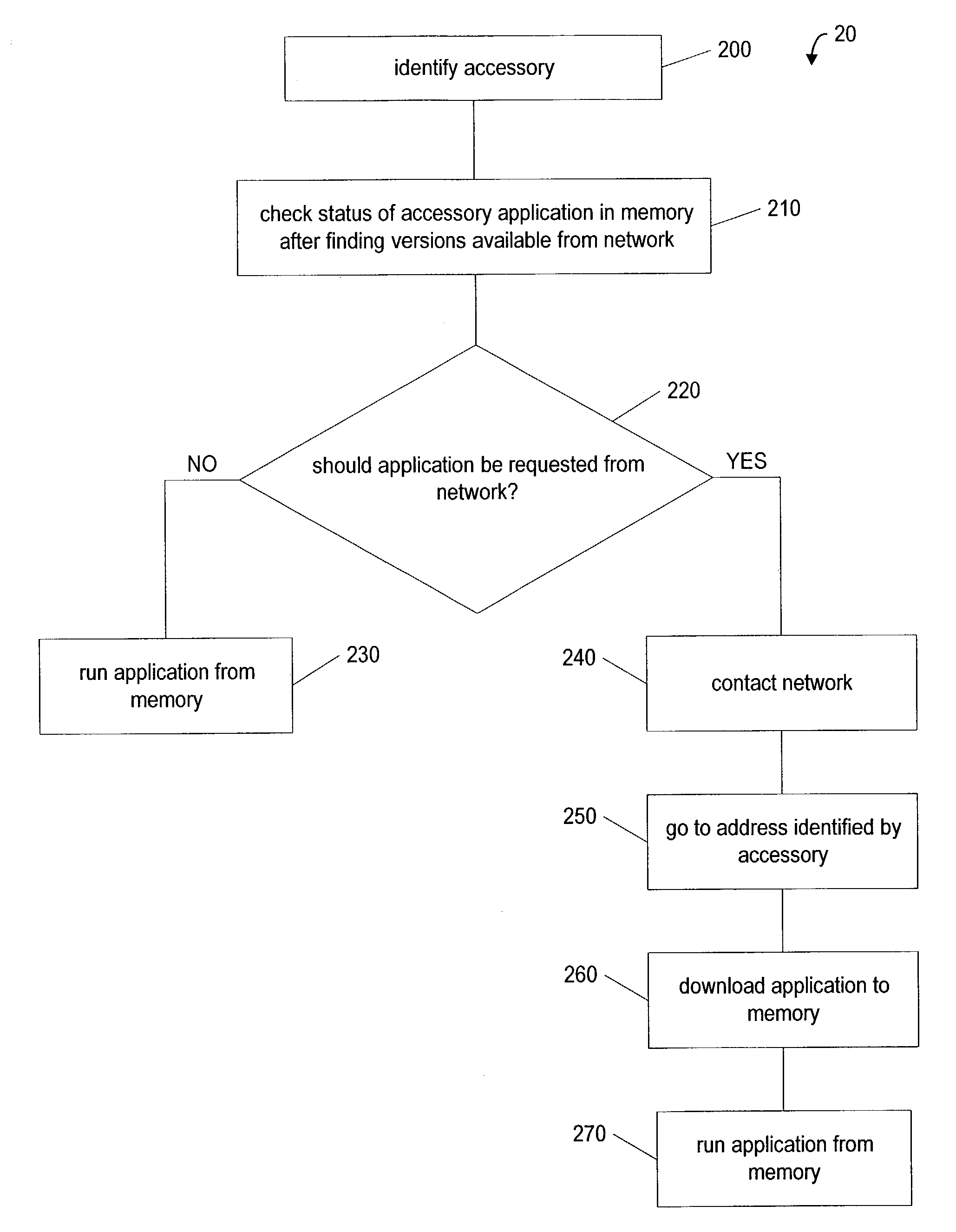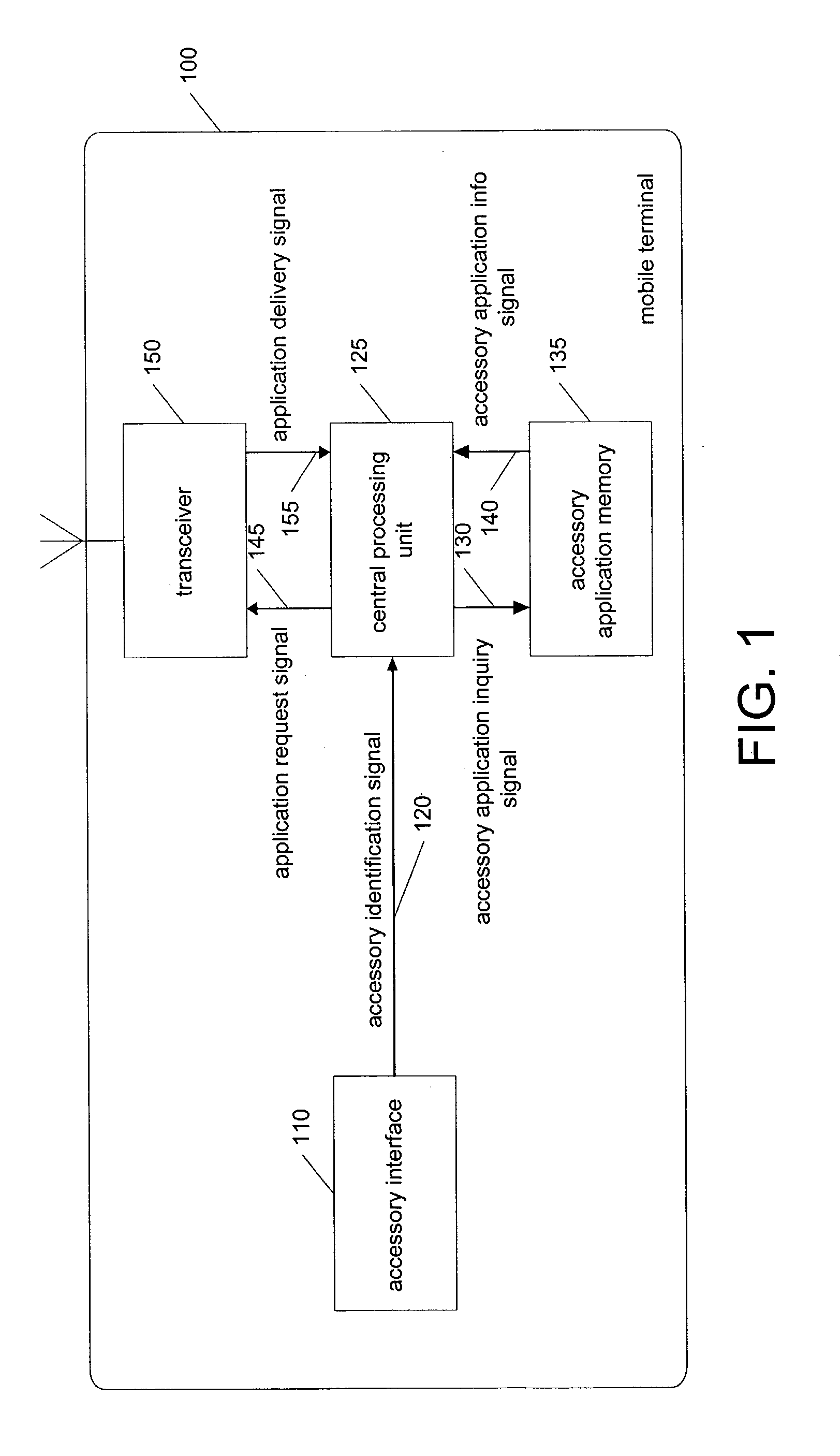Fetching application and driver for extension device from network
- Summary
- Abstract
- Description
- Claims
- Application Information
AI Technical Summary
Benefits of technology
Problems solved by technology
Method used
Image
Examples
Embodiment Construction
[0015]FIG. 1 shows a best mode for carrying out the invention. The mobile terminal 100 includes an accessory interface 110. This may, for example, be a port for attaching the external accessory device. In any case, the accessory interface 110 will provide an accessory identification signal 120, preferably when the accessory is attached to the interface. The accessory identification signal 120 may indicate a network address from which the application can be downloaded in order to operate the accessory.
[0016]A processing unit such as a central processing unit (CPU) 125 within the mobile terminal will receive the accessory identification signal 120, and in response thereto will send an accessory application inquiry signal 130 to an accessory application memory 135 within the mobile terminal 100. Of course, this accessory application memory may simply be the mobile terminal's main memory unit. In any case, the accessory application memory 135 will report back to the CPU 125 with informa...
PUM
 Login to View More
Login to View More Abstract
Description
Claims
Application Information
 Login to View More
Login to View More - R&D
- Intellectual Property
- Life Sciences
- Materials
- Tech Scout
- Unparalleled Data Quality
- Higher Quality Content
- 60% Fewer Hallucinations
Browse by: Latest US Patents, China's latest patents, Technical Efficacy Thesaurus, Application Domain, Technology Topic, Popular Technical Reports.
© 2025 PatSnap. All rights reserved.Legal|Privacy policy|Modern Slavery Act Transparency Statement|Sitemap|About US| Contact US: help@patsnap.com



